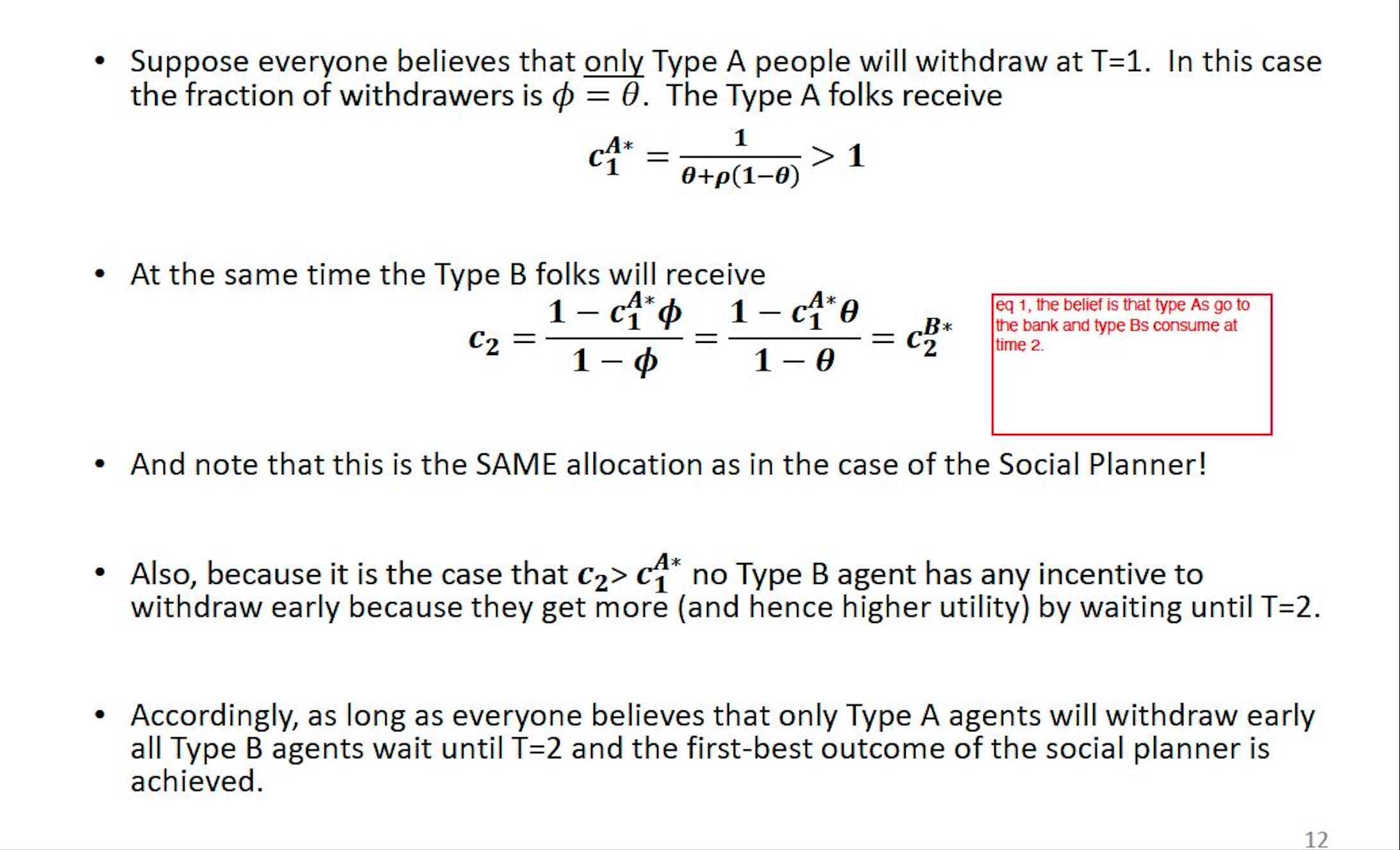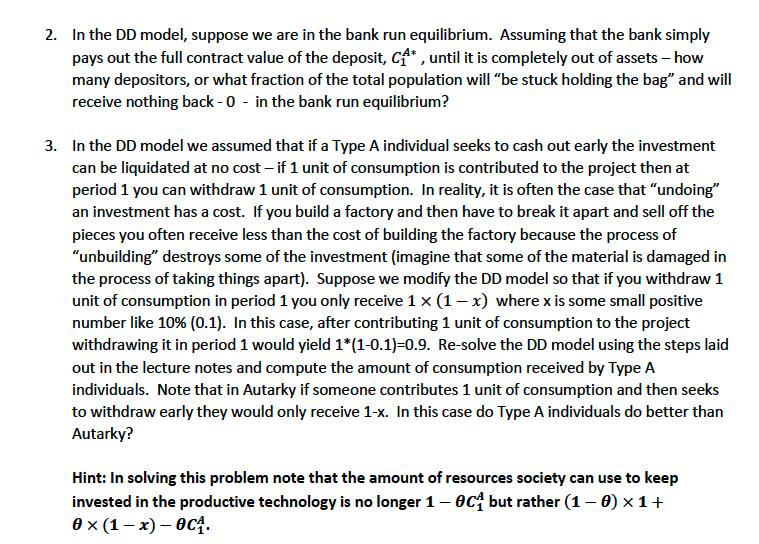Answered step by step
Verified Expert Solution
Question
1 Approved Answer
Suppose everyone believes that only Type A people will withdraw at T=1. In this case the fraction of withdrawers is = 0. The Type


Suppose everyone believes that only Type A people will withdraw at T=1. In this case the fraction of withdrawers is = 0. The Type A folks receive 1 C* = > 1 0+p(1-0) At the same time the Type B folks will receive * 1-c 1-c4* 0 C = = 1- 1-0 B* = C2 eq 1, the belief is that type As go to the bank and type Bs consume at time 2. And note that this is the SAME allocation as in the case of the Social Planner! A* Also, because it is the case that C2> c^* no Type B agent has any incentive to withdraw early because they get more (and hence higher utility) by waiting until T=2. Accordingly, as long as everyone believes that only Type A agents will withdraw early all Type B agents wait until T=2 and the first-best outcome of the social planner is achieved. 12 2. In the DD model, suppose we are in the bank run equilibrium. Assuming that the bank simply pays out the full contract value of the deposit, CA*, until it is completely out of assets - how many depositors, or what fraction of the total population will "be stuck holding the bag" and will receive nothing back -0- in the bank run equilibrium? 3. In the DD model we assumed that if a Type A individual seeks to cash out early the investment can be liquidated at no cost - if 1 unit of consumption is contributed to the project then at period 1 you can withdraw 1 unit of consumption. In reality, it is often the case that "undoing" an investment has a cost. If you build a factory and then have to break it apart and sell off the pieces you often receive less than the cost of building the factory because the process of "unbuilding" destroys some of the investment (imagine that some of the material is damaged in the process of taking things apart). Suppose we modify the DD model so that if you withdraw 1 unit of consumption in period 1 you only receive 1 (1-x) where x is some small positive number like 10% (0.1). In this case, after contributing 1 unit of consumption to the project withdrawing it in period 1 would yield 1*(1-0.1)=0.9. Re-solve the DD model using the steps laid out in the lecture notes and compute the amount of consumption received by Type A individuals. Note that in Autarky if someone contributes 1 unit of consumption and then seeks to withdraw early they would only receive 1-x. In this case do Type A individuals do better than Autarky? Hint: In solving this problem note that the amount of resources society can use to keep invested in the productive technology is no longer 1-0c4 but rather (1-0) 1+ 0x (1-x)-0C.
Step by Step Solution
There are 3 Steps involved in it
Step: 1

Get Instant Access to Expert-Tailored Solutions
See step-by-step solutions with expert insights and AI powered tools for academic success
Step: 2

Step: 3

Ace Your Homework with AI
Get the answers you need in no time with our AI-driven, step-by-step assistance
Get Started


